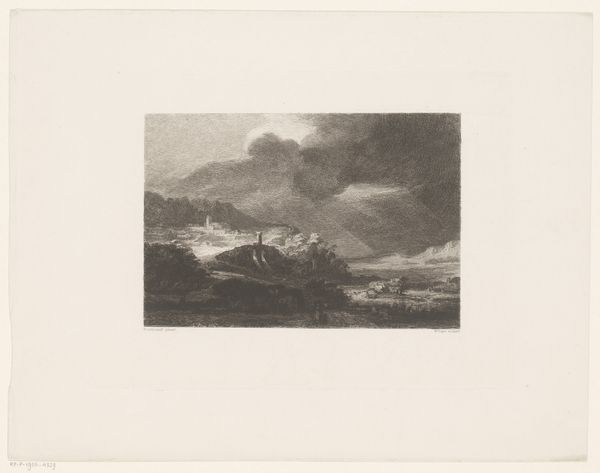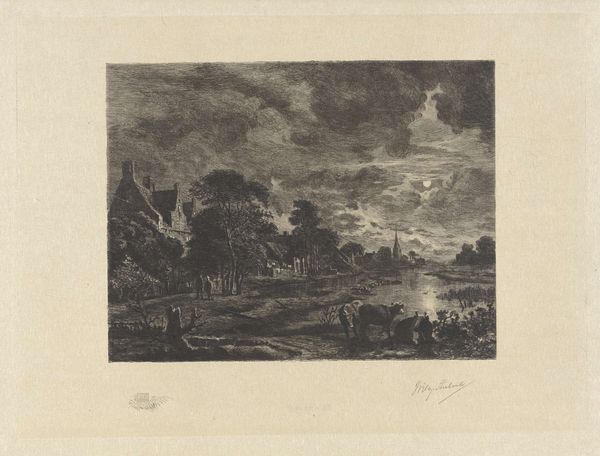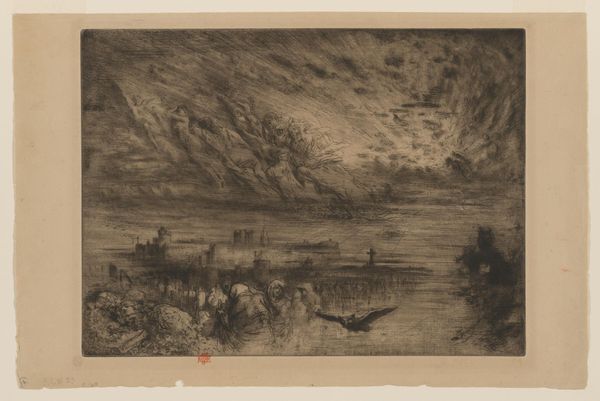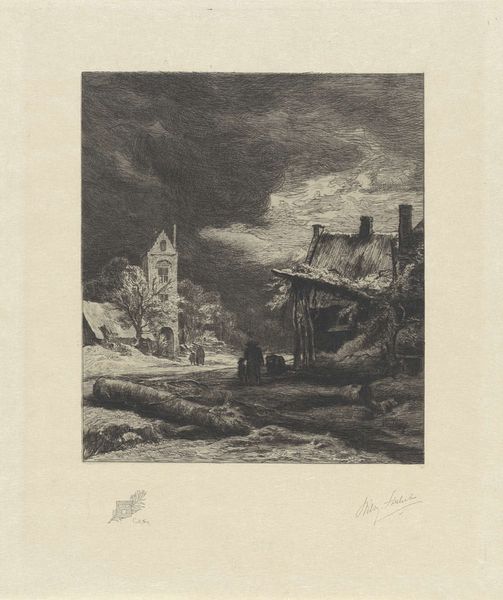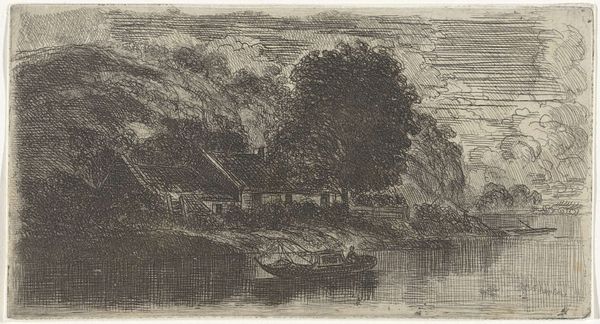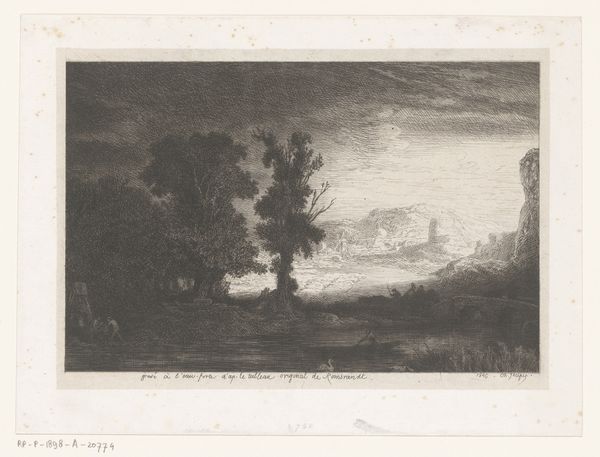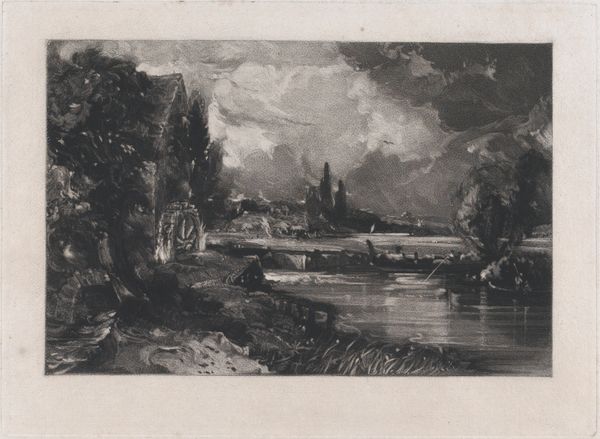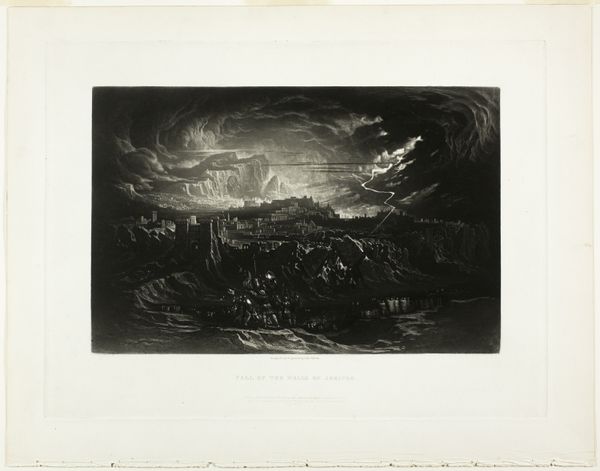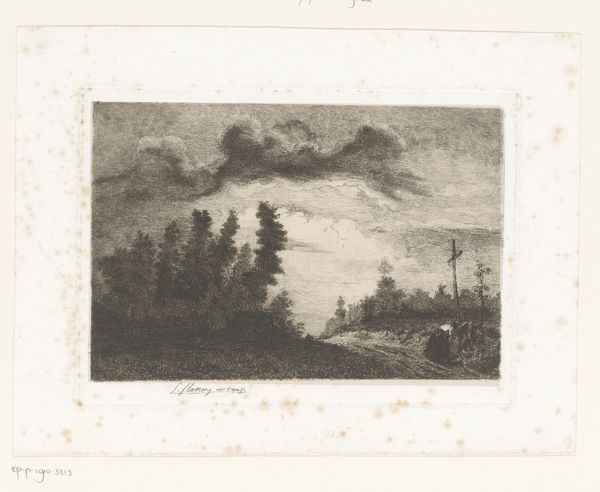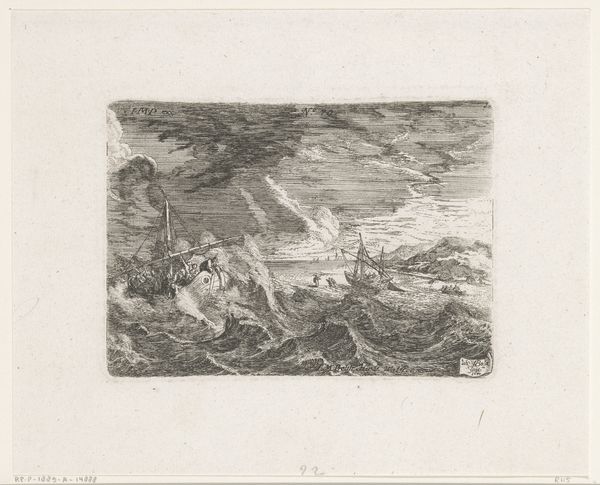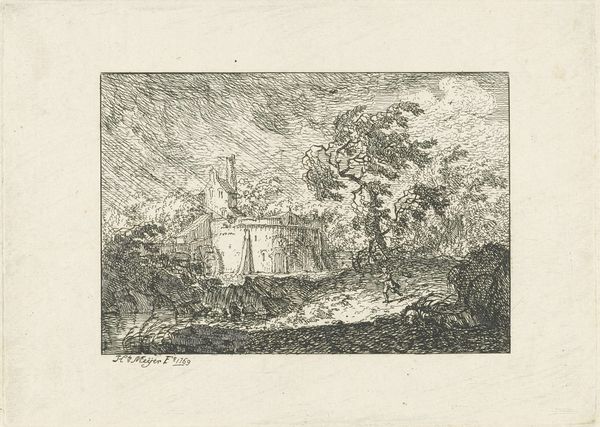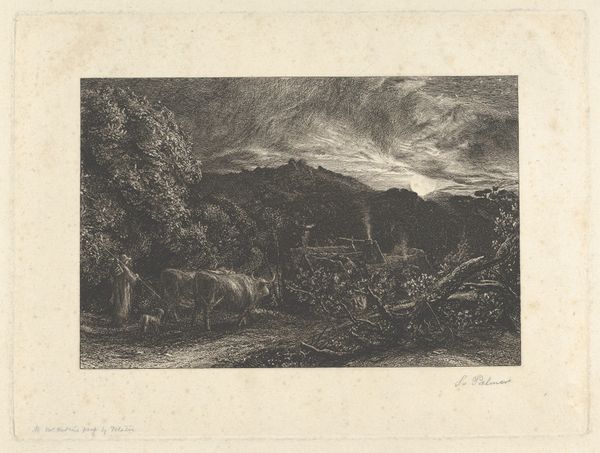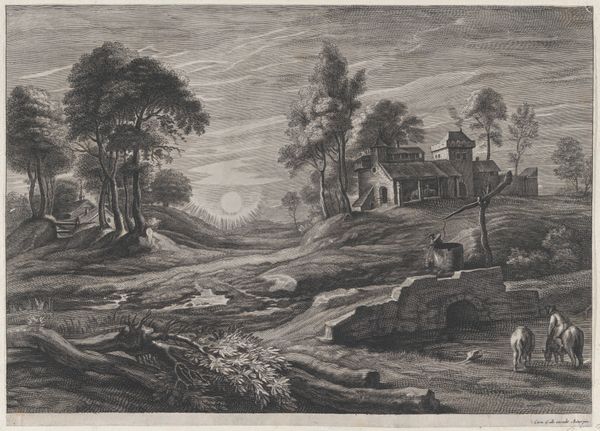
Dimensions: height 140 mm, width 184 mm
Copyright: Rijks Museum: Open Domain
Editor: Here we have Jacobus Ludovicus Cornet’s "Landschap bij maanlicht," or "Landscape by Moonlight," an etching done sometime between 1825 and 1882, housed here at the Rijksmuseum. It's mostly grayscale, creating a somber but compelling scene. What draws you to it? Curator: The enduring power of moonlight imagery resides within our collective psyche. Notice how the artist renders the moon not just as a source of illumination, but as a symbol. The landscape is revealed, yet also cloaked in mystery. Consider how the Romantic era was fascinated with evoking feelings, drawing heavily on symbols to evoke intense emotional states. Do you think this choice of subject would tap into a collective yearning for something beyond the tangible world? Editor: That's a good point! There’s something a little eerie about it, but also hopeful, as though the moon is guiding the viewer in some way. So you think moonlight, as a symbol, allows people to connect? Curator: Exactly! The artist employs familiar visual language – a landscape – but imbues it with this otherworldly quality through the symbolic use of light. Look at the dark trees surrounding the building; they represent protection. Notice the subtle figure to the left, making its way towards the viewer. Where does one's path end and another's begin? What emotions do they elicit? Editor: It definitely shifts the tone to something more introspective, as though this scene asks the viewer to ponder a little bit. I see how this artwork shows light as guidance. I wonder what other symbols Cornet worked with. Curator: Consider how artists continually reshape symbolic vocabulary to engage viewers across generations. Editor: This piece made me think more about symbols, too!
Comments
No comments
Be the first to comment and join the conversation on the ultimate creative platform.
